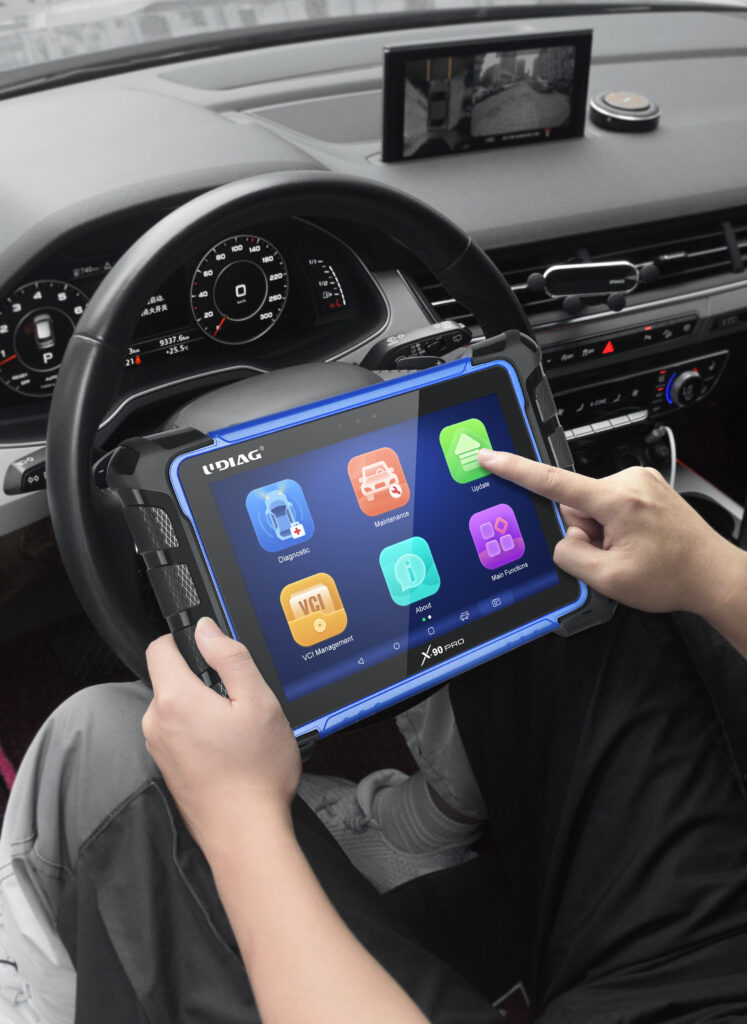Why is it important to address OBD2 trouble codes promptly?
2024-04-20 by UDIAG
In the realm of automotive diagnostics, the On-Board Diagnostics II (OBD2) system plays a crucial role in monitoring and reporting vehicle health. One key aspect of this system is the generation of trouble codes, which serve as indicators of potential issues within a vehicle’s various components. Addressing these trouble codes promptly is essential for maintaining vehicle performance, safety, and compliance with emissions standards.

I. Understanding OBD2 Trouble Codes
OBD2 trouble codes are generated by the vehicle’s onboard computer system when it detects abnormalities in specific components or systems. These codes can be categorized into generic and manufacturer-specific codes, each providing valuable insights into the nature of the problem. Common codes, such as P0xxx and P1xxx, signify different types of issues ranging from engine misfires to sensor malfunctions.
II. Reasons to Address Trouble Codes Promptly
1. The prompt resolution of OBD2 trouble codes holds several critical benefits. Firstly, it allows for early detection of underlying issues, enabling proactive maintenance to prevent more significant problems down the road. By addressing issues promptly, vehicle owners can also ensure safety, minimizing the risk of unexpected breakdowns or accidents caused by malfunctioning components.
2. Compliance with emissions regulations is another compelling reason to address trouble codes promptly. OBD2 systems are designed to monitor emissions-related components, and unresolved issues can lead to increased emissions, posing environmental concerns and potential legal implications. Moreover, addressing trouble codes promptly can help avoid costly repairs by nipping problems in the bud before they escalate into major issues requiring extensive repairs.
III. Consequences of Ignoring Trouble Codes
Ignoring OBD2 trouble codes can have far-reaching consequences. Most notably, it increases the risk of vehicle breakdowns and compromises safety on the road. Unresolved issues can also lead to reduced fuel efficiency, as engine performance is affected by malfunctioning components. Furthermore, non-compliance with emissions standards due to unaddressed trouble codes contributes to environmental pollution, impacting air quality and public health.
IV. Steps to Address Trouble Codes
Addressing OBD2 trouble codes involves a systematic approach. First, using an OBD2 scanner, the codes must be retrieved and deciphered to understand the specific issues reported. Subsequently, a diagnostic process is initiated to identify the root causes of the trouble codes. This may involve inspecting and testing relevant components to pinpoint faults accurately. Depending on the severity of the issue, repairs or component replacements may be necessary, followed by the clearing of trouble codes to ensure that the problem has been resolved.
Conclusion
In conclusion, addressing OBD2 trouble codes promptly is vital for maintaining vehicle health, safety, and compliance with emissions regulations. By taking immediate action upon receiving trouble codes, vehicle owners can mitigate the risk of breakdowns, ensure optimal fuel efficiency, and reduce the environmental impact of their vehicles. Regular monitoring of OBD2 systems and proactive maintenance based on trouble code diagnostics are essential practices that contribute to prolonging the lifespan and performance of vehicles while promoting road safety and environmental responsibility.
FAQs
1. What does it mean when my car’s check engine light comes on?
The check engine light illuminates when the OBD2 system detects an issue with your vehicle. It indicates the presence of trouble codes that need to be read with an OBD2 scanner to identify the specific problem.
2. Why is it important to address OBD2 trouble codes promptly?
Promptly addressing trouble codes helps prevent further damage to your vehicle, ensures safety on the road, maintains compliance with emissions regulations, and can save you from costly repairs by resolving issues early.
3. How do I retrieve OBD2 trouble codes from my vehicle?
You can retrieve OBD2 trouble codes using an OBD2 scanner. Simply plug the scanner into the OBD2 port of your vehicle (usually located under the dashboard), and follow the scanner’s instructions to read the codes stored in the vehicle’s computer.
4. What do the OBD2 trouble codes mean?
OBD2 trouble codes consist of alphanumeric characters (e.g., P0xxx, P1xxx) that indicate specific issues with various vehicle components or systems. Each code corresponds to a particular problem, such as engine misfire, oxygen sensor malfunction, or catalytic converter efficiency below threshold.
5. Can I continue driving if my check engine light is on?
It’s generally recommended to avoid extended driving with the check engine light on. While some issues may be minor, others could lead to more severe problems if ignored. It’s best to address the underlying cause promptly to prevent potential damage or safety hazards.
6. What are the consequences of ignoring OBD2 trouble codes?
Ignoring OBD2 trouble codes can lead to increased risk of vehicle breakdowns, reduced fuel efficiency, and non-compliance with emissions regulations. It may also result in more costly repairs over time if underlying issues are left unresolved.


